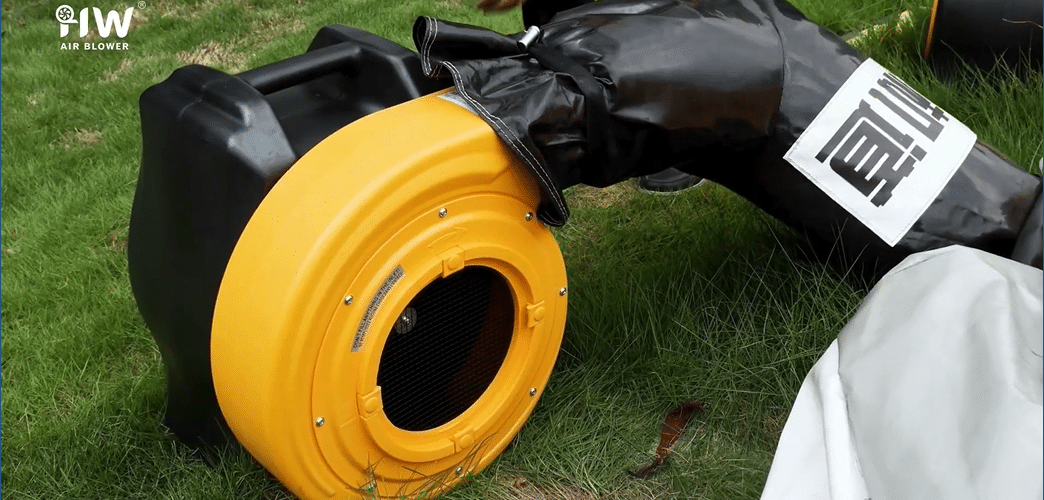
How to Inspect Blower Performance Before Each Event
Ensuring that your air blower is functioning properly before each event is essential to delivering a safe and successful inflatable experience. A thorough inspection helps identify any potential issues, ensuring reliable operation and client satisfaction. Here’s a step-by-step guide on how to inspect blower performance before each event to avoid unexpected problems.
1. Check the Power Cord and Plug
Inspect the power cord and plug for any signs of wear, fraying, or damage. Damaged cords can cause power interruptions or pose electrical risks. Ensure that the plug is clean and fits securely into the power source. Replace or repair any damaged cords before using the blower to ensure safe and consistent power.
2. Inspect the Blower Housing
Examine the blower’s outer housing for cracks, dents, or other damage. The housing protects internal components, so any structural issues could affect performance. A damaged housing could also allow dust and debris to enter the blower, leading to reduced efficiency or motor wear. Clean the housing if necessary and make sure all screws and fastenings are secure.
3. Test Airflow Strength
Turn on the blower and check the airflow output. The air should be strong and steady, without any fluctuations. If the airflow feels weak or inconsistent, it could indicate a problem with the motor or internal components. Regularly testing airflow strength helps ensure that the blower can maintain the inflatable’s stability during the event.
4. Listen for Unusual Sounds
Pay attention to any unusual noises such as grinding, rattling, or squealing, which can indicate issues with the motor, fan, or other internal parts. A properly functioning blower should produce a steady, smooth sound. Any irregular noises should be inspected further to avoid operational issues during the event.
5. Examine Safety Features
If your blower has safety features like automatic shutoff, temperature regulation, or overload protection, make sure these are functioning correctly. Some blowers have indicator lights or alerts that signal when safety features are activated. Testing these features before each event helps ensure that the blower will shut down safely in case of overheating or electrical overload.
6. Check for Debris in the Inlet and Outlet
Inspect the blower’s air inlet and outlet for any blockages or debris, such as leaves, dust, or small objects. Blockages can restrict airflow and strain the motor, leading to reduced efficiency and potential overheating. Clear out any debris to ensure optimal performance and prevent damage to the blower.
7. Verify Secure Connections
Ensure that the blower is securely connected to the inflatable and that all fastening mechanisms, such as clips or straps, are in place. Loose connections can result in air leaks, reducing the inflatable’s stability. Tighten any connections as needed to maintain a safe and stable setup.
8. Perform a Test Run
Before the event, run the blower for a few minutes to simulate actual operation. Observe the performance and monitor the airflow. This final test can help identify any last-minute issues that may not have been apparent during the initial inspection. Make sure to test the blower in the event environment to account for factors like power supply stability and weather conditions.
Conclusion: Regular Inspections for Reliable Blower Performance
Inspecting blower performance before each event is crucial for ensuring the safety, reliability, and success of your inflatable rentals. By following these steps, you can identify and resolve potential issues, ensuring your blower operates smoothly throughout the event. Regular inspections not only improve performance but also help extend the lifespan of your equipment, enhancing overall business efficiency.
By taking a few minutes to inspect your air blower before each event, you can provide clients with a worry-free experience and maintain the high standards of your rental business.